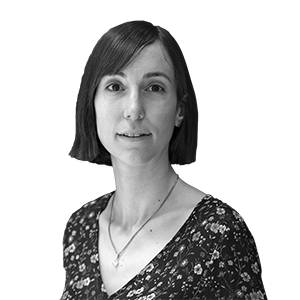Carme Fenoll: "The protagonists of a country are often invisible"
The librarian rescues seven of Josep Pla's 'Homenots' through the eyes of his grandchildren.


BarcelonaWhen she was working at the Palafrugell Library, Carme Fenoll (Palafolls, 1977) met the grandson of one of the Homenots by Josep Pla and a spark ignited in him. "I found it very interesting to be able to talk about the Homenots with living people who have a sentimental bond, to be able to rescue a family memory that had not been told," explains Fenoll. From that idea arose a cycle with the Josep Pla Foundation in which the grandchildren of the Homenots and experts in his work and which has now resulted in a book. Homenets (The Bell) contains seven portraits of the Homenots Seen by the grandchildren of each of them, but also by the intellectual grandchildren who have embraced the legacy and kept it alive.
Josep Pla's series, published between 1969 and 1974, consists of 60 profiles of figures who marked a before and after in Catalan history, culture, and society. Fenoll chose seven, guided, to begin with, by those with clear voices. "Unfortunately, there weren't many. It was very difficult for me to find them," notes Fenoll, who is currently director of the Department of Culture and Community at the Polytechnic University of Catalonia (UPC). Coincidentally, one of them happened to be close to her work. Francisco de Borja Moll Echeto, grandson of the linguist Francisco de Borja Moll, is a professor at the UPC and researcher at the National Supercomputing Center. Carlos Riba Romeva, grandson of the poet Carlos Riba, is also an engineer. "They are people who work like their grandparents, with the desire to leave a legacy but without the desire to become popular figures or go down in history. The protagonists of a country are often invisible," says Fenoll.
Salvador Espriu's library
The others Homenots The most notable figures in the book are Pompeu Fabra, Jaume Vicens Vives, Joan Maragall, Salvador Espriu, and Josep Trueta. All of them "worked a lot in the shadows and as activists, with a sense of national responsibility," says Fenoll, who also highlights their work as teachers and pedagogues. Conversations with the grandchildren give a new dimension to these figures and allow us to learn about their more personal side, with anecdotes and interesting facts, such as Salvador Espriu's fondness for giving books as gifts. "He didn't want to have a library of relics. Family members told me that he devoted himself to sharing books with great generosity," Fenoll relates. Homenets He also explains how Pompeu Fabra's grandson, Peio Rahola, had to study and make an effort to learn Catalan. "From the outside, they may seem like great intellectuals, but they all lived on the edge of survival, without high purchasing power, except for Maragall," says Fenoll.
Apart from the familiar look, Homenets It also gives voice to experts in the works of the protagonists who work to stretch the thread of their legacy. Among these clean intellectuals are Màrius Serra, Teresa Cabré, Eduard Escoffet and Salvador Macip. "I like to think that all Homenots Pla's works have a traceability to this day. They are not figures who have been relegated to Olympus, but rather people who look to them to move forward. Today's Catalonia needs to value the work of many great men and many dances," Fenoll emphasizes.
From his point of view, one of the great values of Josep Pla's work is that he wrote these portraits when the subjects were still alive. "We tend to applaud the legacy of people after they have died. It would be very good to recognize the work of people like Màrius Serra or Salvador Macip in life; they are extremely powerful people who continue in the sphere of those great men," he adds. Pla's profiles highlight the characters' commitment to the Catalan language and culture at a historical moment full of obstacles. What would the homage notes do in today's Catalonia? More than political postulates, they would work for language, medicine, literature."
